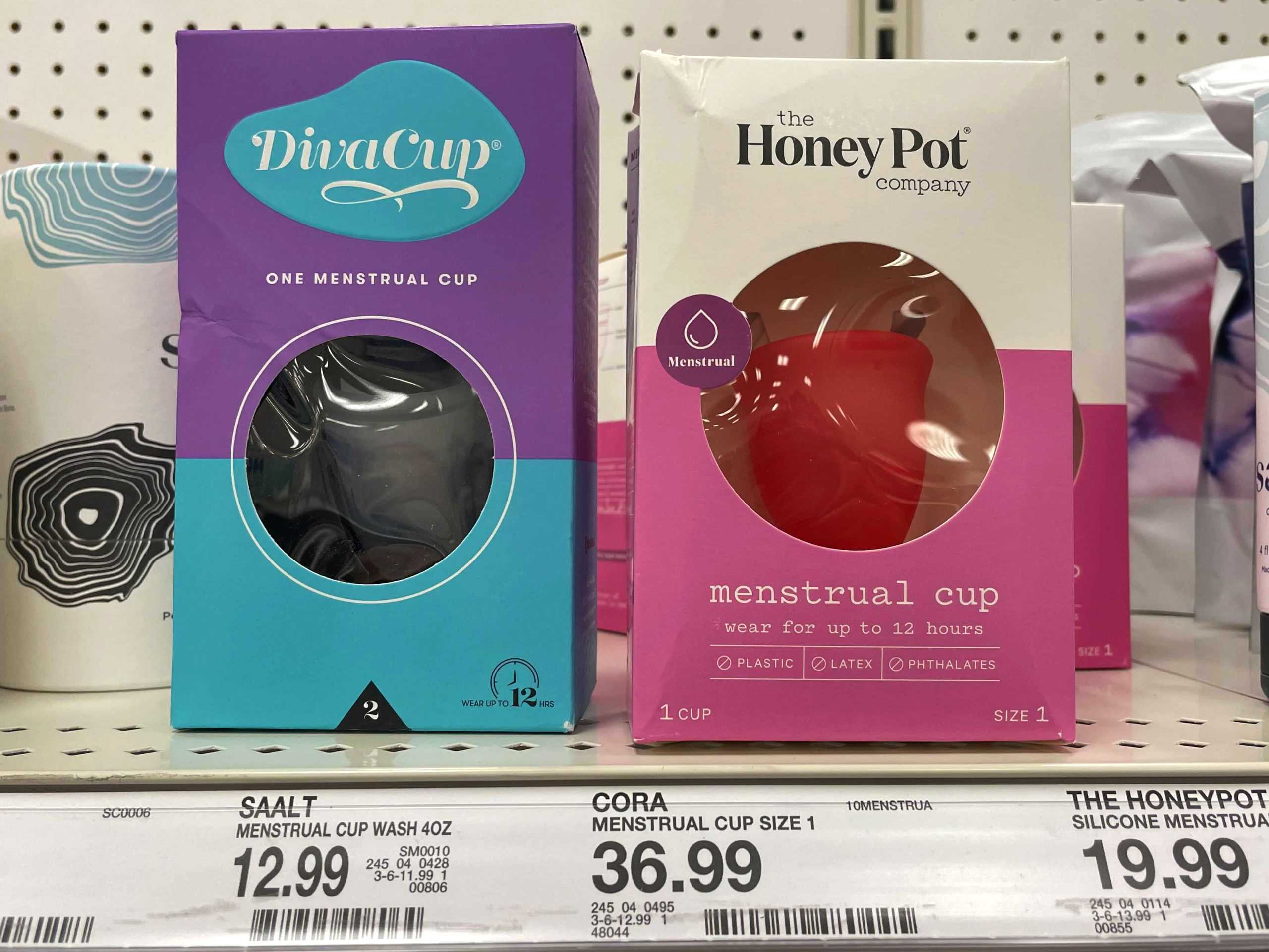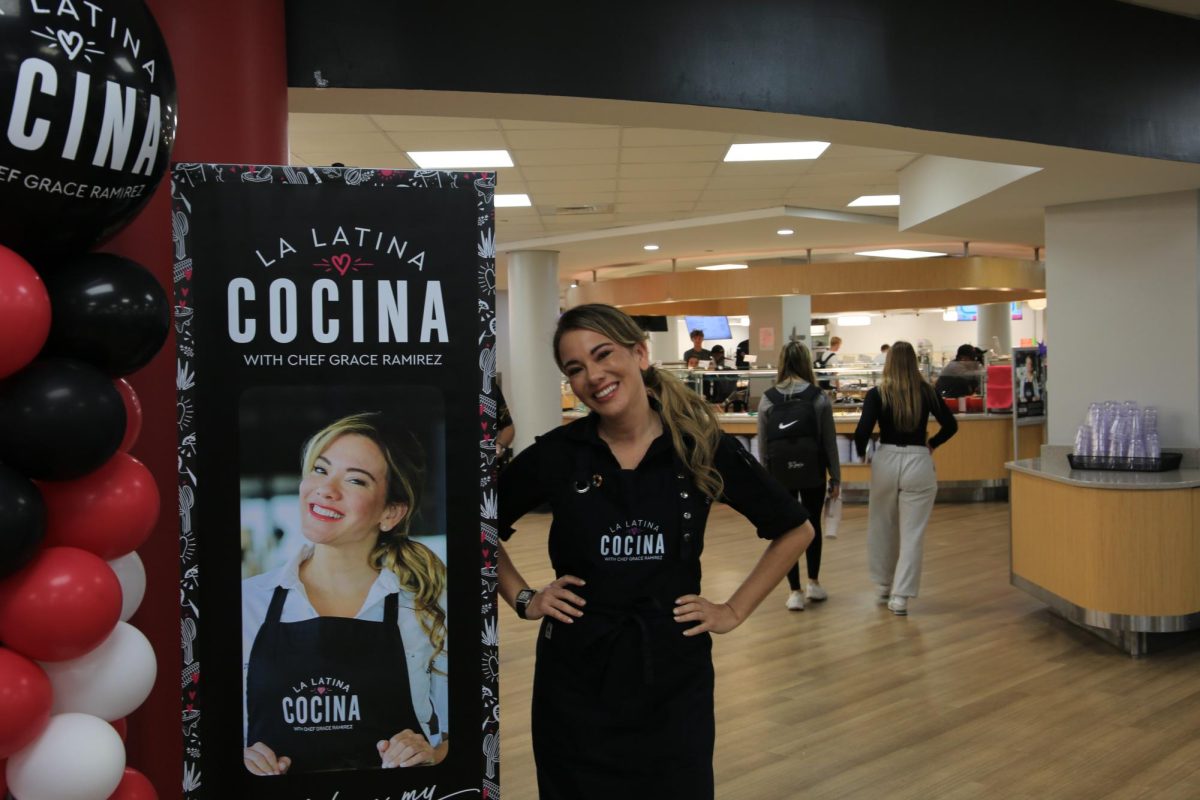Nearly hidden on the top shelf in Target’s period products aisle, were menstrual cups in four sizes: regular, small, A and B.
“How am I supposed to know what size my vagina is?” I thought to myself. “Shove a ruler up there?”
I grabbed the smallest sized cup because it looked the least intimidating for a first-time cup user like myself. Hiding the packaging between a bag of PopCorners and pantyliners, I scurried off to self-checkout.
A menstrual cup is a bell-shaped, reusable period product made out of silicone. It is designed to be inserted into the vagina to collect period fluid. While menstrual cups are not as popular as tampons and pads, and hold a relatively small piece of market share in the period product category, that share is expected to grow 6.2% by 2026, according to Globe Newswire.
Menstrual cups have piqued my interest for a while due to their sustainability and cost-effectiveness, so I finally decided to give them a try.
When I got home from Target and unboxed the cup, my nerves kicked in. The hot pink cup was daunting and seemed huge in my hand compared to the regular, compact tampons I am used to. I thought, “There is no way that’s going to fit up there.”
I followed the instructions on the package: fold, insert, position and secure. I do not think I have ever spent so much time with my fingers so deep into my vagina, repositioning and rotating the cup, making sure it was placed correctly.
Adriana Esposito ’23, an avid menstrual cup user, told me menstrual cups are about getting comfortable with one’s body.
“You are able to know your anatomy and know where it should be placed in your vagina and how it should feel,” Esposito said. “You should be comfortable knowing it’s not going to get lost. That’s a big thing that people are afraid of.”
It’s true. Inserting the cup was more intimate and up close compared to the sterile, touch-free tampon applicators I was used to. I have never been comfortable with my body, and exploring it with this foreign, silicone object was a mental hurdle.
Deanna Struss ’23 said she felt the same way the first time she tried a cup.
“I wasn’t sure if I was going to be able to get it in correctly or out correctly, and I think a lot of people have that fear,” Struss said.
I stood up after inserting the cup. I could feel it a little, in part because I was so aware of it. After a few minutes, however, I didn’t notice it at all.
Menstrual cups can be worn for up to 12 hours, as opposed to eight hours with disposable products, so I wore it for nine hours straight before removing it. As a first-timer, this involved me sprawled out on my cold bathroom floor with a hand mirror between my legs.
My second time inserting and removing the cup was easier. By the third day of my period, I was a pro.
I thought to myself, “Why don’t more women use this?”
“I feel they’re just different, and that’s why it’s less mainstream,” Esposito said. “It’s not like pads or tampons, which is what we are brought up on because they are more accessible and cheaper.”
I paid $32.99 for a Saalt menstrual cup at Target. That’s about mid-range for a menstrual cup. But after calculating how much I spend on disposable period products annually, I realized one menstrual cup equaled a four-month supply of products. And the menstrual cup should last 10 years.
Cost is a benefit for Struss, too.
“Period products are honestly so expensive, so I figured if there was any way that I could save money, that would be good, so I wanted to give it a try,” Struss said.
Struss also likes that menstrual cups are more sustainable.
“It saves me so much money for not having to buy tampons every month, and it just makes me feel better about the impact on the environment,” Esposito said. “I just feel like it’s honestly the best option.”
Lynette Medley, co-chief executive officer and founder of The Safety Programming for Optimal Transformation (The S.P.O.T.), the world’s first-ever period menstrual hub, located in the Germantown neighborhood of Philadelphia, explained why menstrual cups aren’t as widely used.
“On one hand, a lot of populations in poverty don’t have access to utilities and running water, so they can’t properly clean them. They might have housing insecurities and they can’t store them,” Medley said. “There’s also a racial and cultural divide where some people don’t believe in insertions at all. Then, on the other hand, I have populations who I will give them a menstrual cup and it will then allow them to live in dignity for years.”
Medley said that through her work at The S.P.O.T., she noticed a racial divide amongst menstrual cup users and wanted to use her own identity and platform to bridge this gap. there are also racial disparities among menstrual cup users.
“Most Black communities don’t even know what a menstrual cup is. And then, sometimes receiving it from somebody like me, in a space like this, who’s been talking about it and making it comfortable, has allowed more and more people to have access and want to try them,” Medley said.
The S.P.O.T. now offers menstrual cups in their inventory of period products due to a recent sponsorship with Diva Cup. Medley said she hopes having cups available at The S.P.O.T. will help democratize menstrual cups for all.
After my first cycle with a cup, I was convinced that they are not as gross and intimidating as I once thought—. I don’t think I will ever go back to single-use period products.
















































